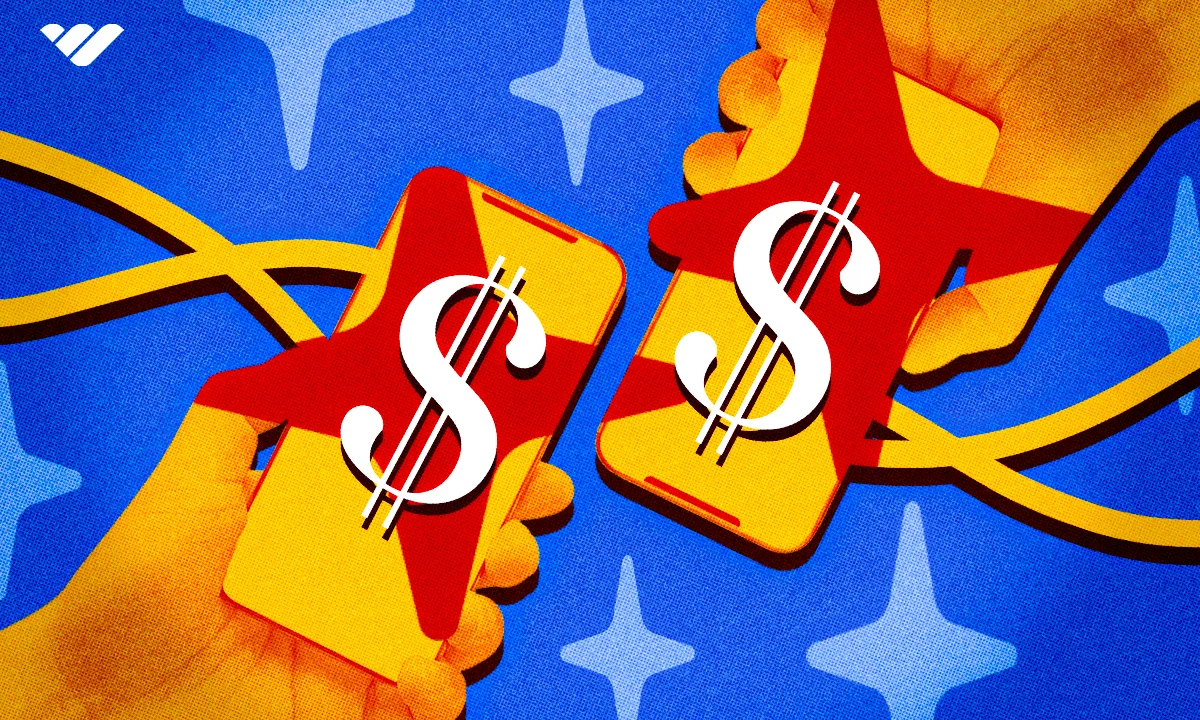Why are digital creators becoming a cornerstone of the modern economy, what even are they, and can you actually make money as a digital creator? We’ll tackle all of these questions and more!
Key takeaways
- Digital creators must master multiple skills beyond content production, including market research, platform algorithms, and stakeholder management.
- The creator economy is projected to reach half a trillion USD by 2027, making digital creation a viable career path.
- Video content remains the most profitable format, but creators can succeed across written, audio, and art mediums.
‘Content’ is a word you’ll hear everywhere online, and plenty in the real world too. The realm of content and digital creation has well and truly bled into the every day, and individuals and businesses alike rely on digital creators for a variety of reasons—the former for entertainment and education, the latter for brand awareness and engagement.
So, why are digital creators becoming a cornerstone of the modern economy, what even are they, and can you actually make money as a digital creator? We’ll tackle all of these questions and more!
What is a digital creator?
Digital creators are individuals who create content across a variety of digital platforms. The content they create can take a number of different forms, from video or still images to audio and text from full-length eBooks to smaller blog posts and even Tweets. The emphasis on the content they create means that digital creators are often called content creators, and the point is to engage people with content in different ways.
Are digital creators different from influencers?
Quite simply, yes. There’s a lot of overlap, and it’s correct to say that all influencers are digital creators because they do actually create digital content as a vehicle for their influence. However, the distinction lies with intention—an influencer is often judged on their following, and aims to influence (hence the name) their audience in some way, whether that’s to buy a product or think and act in a particular way.
Digital creators, on the other hand, often have a following but don’t necessarily need one. There are creators putting heart and soul into digital content without a real audience—and even those with an audience aren’t trying to influence them. They’re trying to engage, educate, or entertain.
What does a digital creator do?
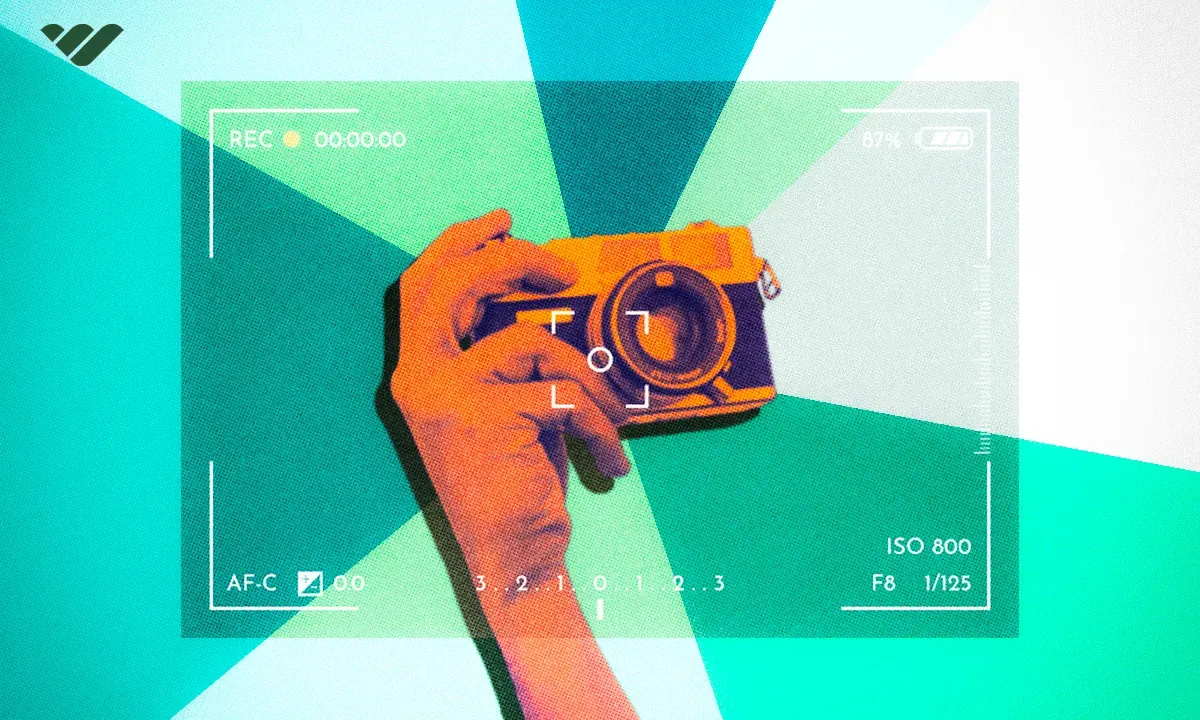
The digital creator's remit can surprise the uninitiated because it’s far broader than many people suspect.
A lot of the time, digital creators possess an intuitive grasp of how market research works because, even without formal training in the field, they’re able to analyze their domain quickly and effectively and sniff out opportunities. Granted, many creators tend to jump on the latest trends, but even that shows a certain agility in operation and an understanding of where public interest is moving.
It’s also important not to underestimate the work and skill required to actually create quality digital content. Content creation often requires the mastery of multiple digital and analog tools and techniques—video, for instance, needs an understanding of how to capture a shot, manage lighting, record audio, and then all of that needs to be taken into the studio to be cut and mixed together using complex video editing software.
Besides, creating excellent content is only half the battle. The most successful digital creators aren’t just experts at content creation, they’re also able to ensure their content is seen by as many eyes as possible. This isn’t the easiest gig in the world—just look at the advertising budget of traditional content companies like movie and TV studios. Digital creators can get the same results for free via the knowledge of how social media and platform algorithms work.
If being experts at research, execution, and marketing wasn’t enough, top digital creators also have to navigate relationships with various stakeholders—they need to ensure that they connect with fans or followers while also dealing with entities like brand partners and sponsors.
So, the next time you hear someone say that the role of digital creator is easier or lesser than a traditional gig in any way, you’ll know a whole lot better.
Why digital content is booming
You’ll often hear the mantra that we live in a creator economy today, and that means more and more people are able to make a living–and a whole lot more–by doing what they love. The fact that it’s possible to monetize digital content has thrown the gates of entrepreneurship wide open, and it’s expected that the creator economy could be worth as much as half a trillion USD by 2027.
There are over 200 million digital creators out there today, and although only some 4 million of those breathe the rarified air of over 100,000 followers, there are 41 million with over 10k and 139 million with 1k+. Yes, simply counting followers is more of an influencer metric than one for outright digital creators, but follower numbers make for an excellent indicator of revenue potential—and 10k+ is doable with a little effort, irrespective of platform.
Beyond just the incredible amount of creativity going into content every single day, there’s an entire living, breathing ecosystem of commerce going on in the background. We’re talking about the different digital platforms that host creators, companies that get involved in the field in different ways, marketers and marketing agencies, and plenty more.
The boom of digital content also has plenty to do with shifting tastes and audience preferences. On the one hand, there’s the generational shift towards on-demand content and more authentic creativity—your grandparents might still sit around watching TV at dinner time, but nobody else in the house is interested in that anymore.
Then there’s the cost of living crunch that the majority of consumers in every country are being exposed to. It’s a price that apparently needs to be paid in service of corporate profits and executive bonuses, but the upshot is that fewer and fewer people are interested in paying Netflix precious cash every month when they can get much more (and often, frankly, better) content for free on platforms like YouTube .
All in all, digital content is on an upward trend, and it doesn’t look likely to stop. Granted, a lot of platforms that empower digital content creation have outsized power and could attempt to put the brakes on things if they wanted to, but technology is moving at a rapid pace—it’s more likely that digital creators and their audiences will have more ways to connect rather than fewer as time ticks on.
5 types of digital creator content
1. Video content
Video content is probably the first type of content that comes to mind when one imagines a digital creator and their work, and that’s only natural given how powerful the medium of video is. It’s far too easy to get lost for hours on end in a world of video, and entire platforms like TikTok have been created on the basis of that, trapping users in endless scrolling cycles of video after video.
It’s an extremely effective form of content for most niches, and while there are a couple of key platforms that dominate the video content scene, it’s a form of media that can reach consumers in any corner of the planet. For that reason among others, it’s also one of the most profitable forms of content to create.
We weren’t kidding about how niche digital video creators can get, either. Take the Football Manager series of video games, one of the most successful franchises in existence but also extremely niche given the granular levels of detail and almost complete absence of graphical fidelity in the entire playing experience. There are several successful digital creators doing “FM” videos, such as Zealand.
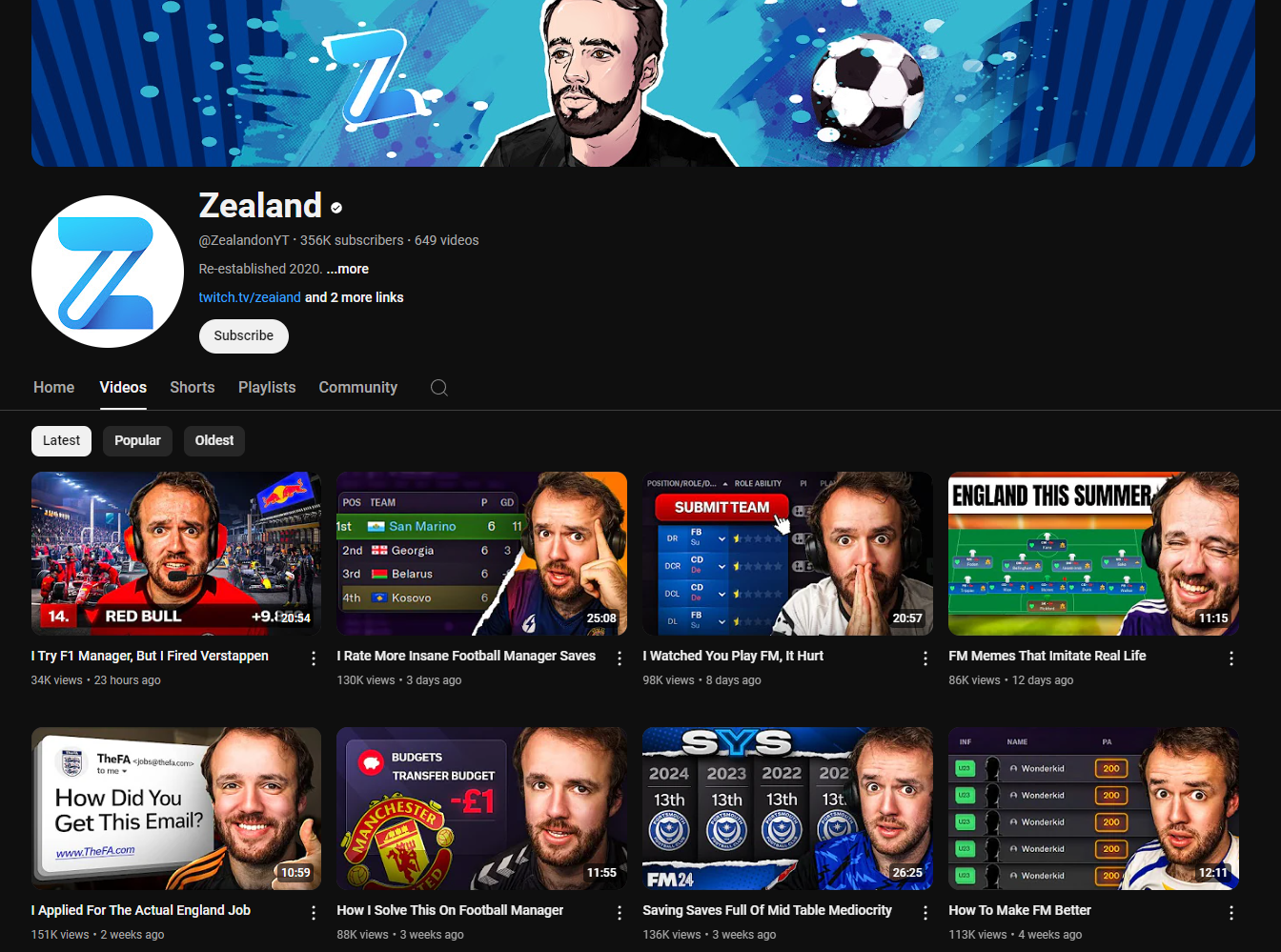
There are plenty of other digital creators in this niche, and they do things in very different ways—many, such as The Deep Lying Playmaker, feature rich visuals and a pro recording setup down to the YouTube-typical violet and blue lighting, while others like Avgdad keep it lo-fi by uploading straight-up screen recordings and Paint thumbnails but still garner tens of thousands of views.
YouTube or TikTok videos aren’t the be-all and end-all of video content either—there’s live streaming, which is an extremely popular form of entertainment across plenty of niches, and online courses and instructional content, too.
2. Written content
Written content has been around as long as the internet itself, with blogs (the term originating from the words “web log”) leading the way and being one of the internet’s primary forms of digital content for a long time. Increased bandwidth eventually made video content possible, but there are still some extremely popular, and profitable, blogs in various corners of the net.
Shorter-form written content is also a huge part of today’s online ecosystem. Twitter started it by making it possible for people to publicly communicate with just about anyone else on the platform, and now posting on Twitter and platforms like it counts as bona fide content creation.
There are plenty of left-field ways of using this sort of short-form written communication, of course, and recently short-selling hedge funds have come under the spotlight. Hindenburg Research, for example, has attacked Indian market regulator SEBI after being accused of violating US securities laws by colluding with an investor who made a short bet against the Adani group ahead of the Hindenburg opinion being posted.
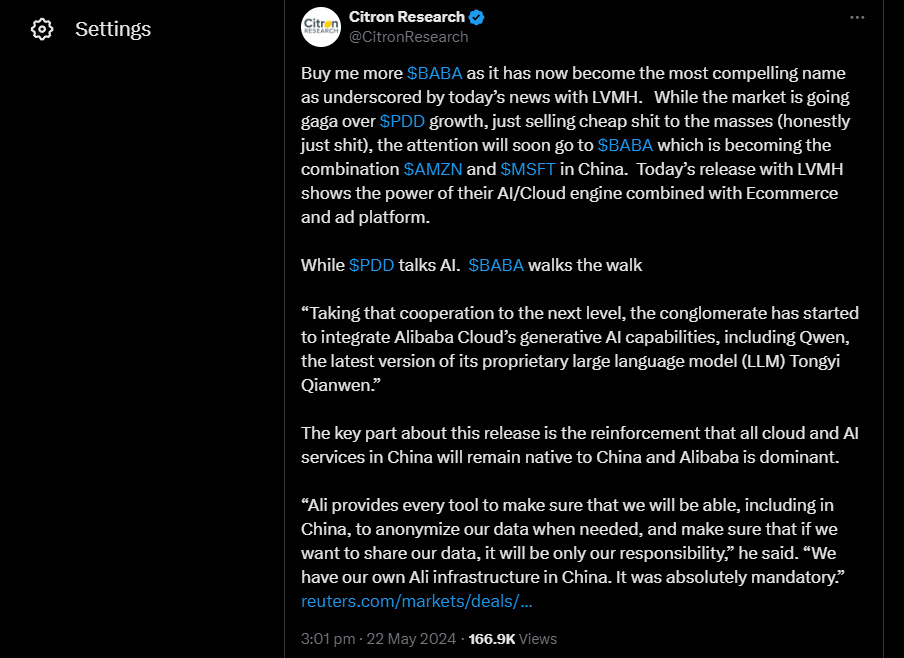
Citron Research is another Twitter-based hedge fund on the platform for 13 years and in the business of online written content for two decades. However, Citron owner and founder Andrew Left was recently indicted for 19 counts of securities fraud and lying to federal investigators, allegedly taking contrary trading positions to his public recommendations behind the scenes.
The example of Citron and Left underlines that digital content is an extremely serious business today, and companies can leverage written content for millions of dollars in some cases, although there are indeed consequences to be had for those who play too fast and loose.
Blogs and Tweets aren’t the end of the story, either. Newsletters count as digital content too, and some creators put their heart and soul into these—as do eBook authors, many of whom are able to make a living from their royalties.
3. Audio content
Audio content is also an extremely big market, and that should come as no surprise given how intrinsic a part of just about every culture music is. There are artists creating their own music in just about every genre you’ve heard of and plenty you haven’t, and the trend of musicians analyzing the works of others or even covering mainstream music in different styles doesn’t look like it’s going away anytime soon.
The other main form of digital audio content is the podcast. These have been around for a while now but keep on increasing in popularity thanks to the fact that you can combine podcast listening with just about any other activity—whether you’re working out, driving, commuting, cooking, gaming, or just dozing off on the couch, podcasts do just as good of a job as music does.
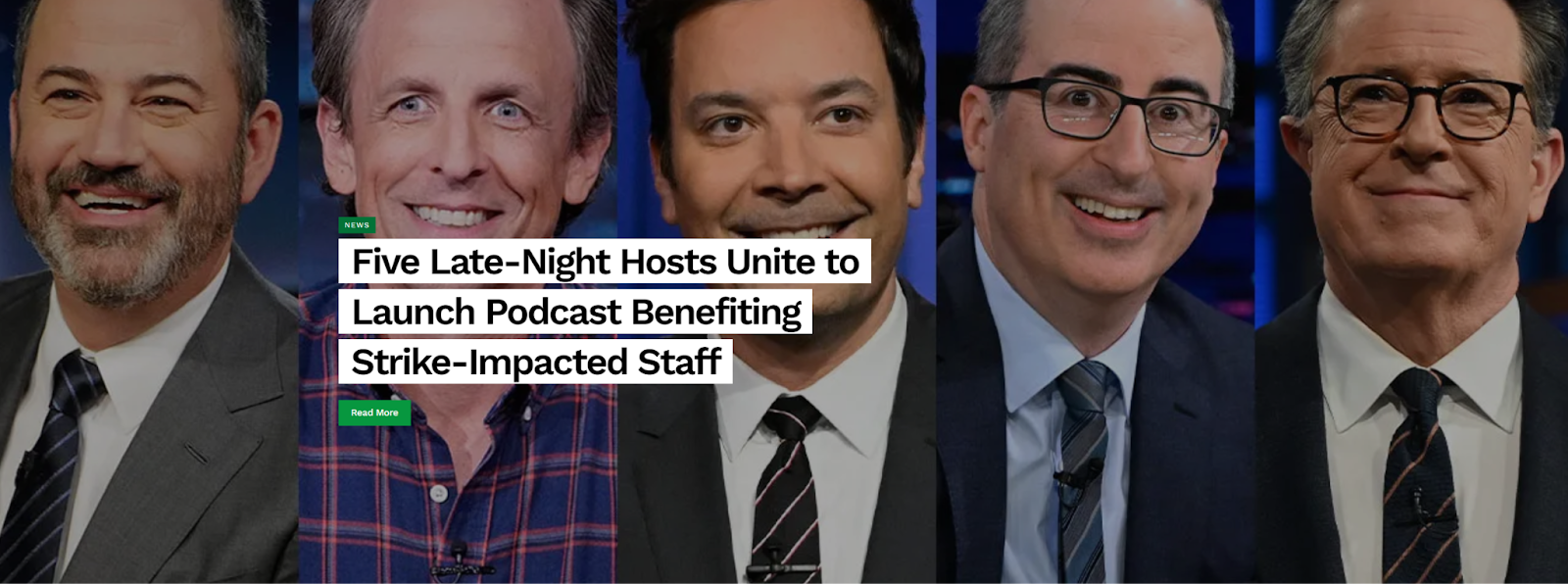
You’ll find podcasts taking on just about every interest, hobby, issue or cause, and some can spark out of the unlikeliest of circumstances. Take the Strike Force Five podcast, which kicked off near the end of the Hollywood writers’ strike. It was created by the five late-night TV hosts, John Oliver, Stephen Colbert, Seth Meyers, Jimmy Kimmel and Jimmy Fallon, with all of the show’s proceeds going to their striking staff.
4. Art content
Digital art is one of the biggest creative industries out there, and it also happens to be one of the most powerful domains when it comes to creator content. There are digital creators out there expressing themselves in various different ways, but also those fulfilling works to order—every online brand needs the assistance of these creators at some stage in order to enhance their image via graphic designs and logos.
AI has changed the digital art domain quite markedly over the last couple of years, and in a sense has added a sense of noise or clutter to the field. However, there are still plenty of digital creators painstakingly creating original work that our machines simply can’t conceptualize (although they do a fine job of copying once presented with the work).
It’s also worth adding NFTs to the mix here although their time (as outright examples of digital art, at least) appears past. Certain NFT projects took the digital art world by storm back in 2021 and 2022, and even people like Jimmy Fallon were very into it—Fallon purchased one particular NFT, part of the Bored Ape Yacht Club collection, for the equivalent of $225,000.
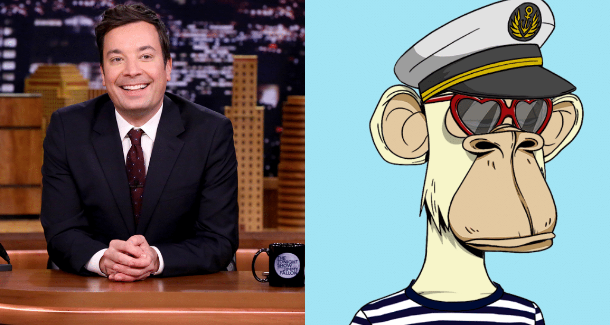
The digital art world has moved on from the NFT-as-art fad, but it’s good to know that the underlying technology has been very well received. Some of the biggest brands in the world are using NFTs in their logistics processes and supply chains, and non-fungible blockchain-based tokens are being used to validate the authenticity of real-world art now, too.
5. Ecommerce content
Ecommerce is another area of digital content that’s booming, although it can be difficult to categorize. Knowledge base articles and reviews are one way of looking at ecommerce digital content, for example, and they’re vital to how the industry works. There are plenty of experts in just about every niche, with names and brands that consumers often turn to when they’re looking to learn about the market.
Gamers Nexus, for instance, are one of the most trusted knowledge base creators and reviewers in the area of computers and hardware. There’s an element of influence and they do produce sponsored content, but they’re known as being the hardest-hitting, most honest reviewers of gear out there, sponsored or not.
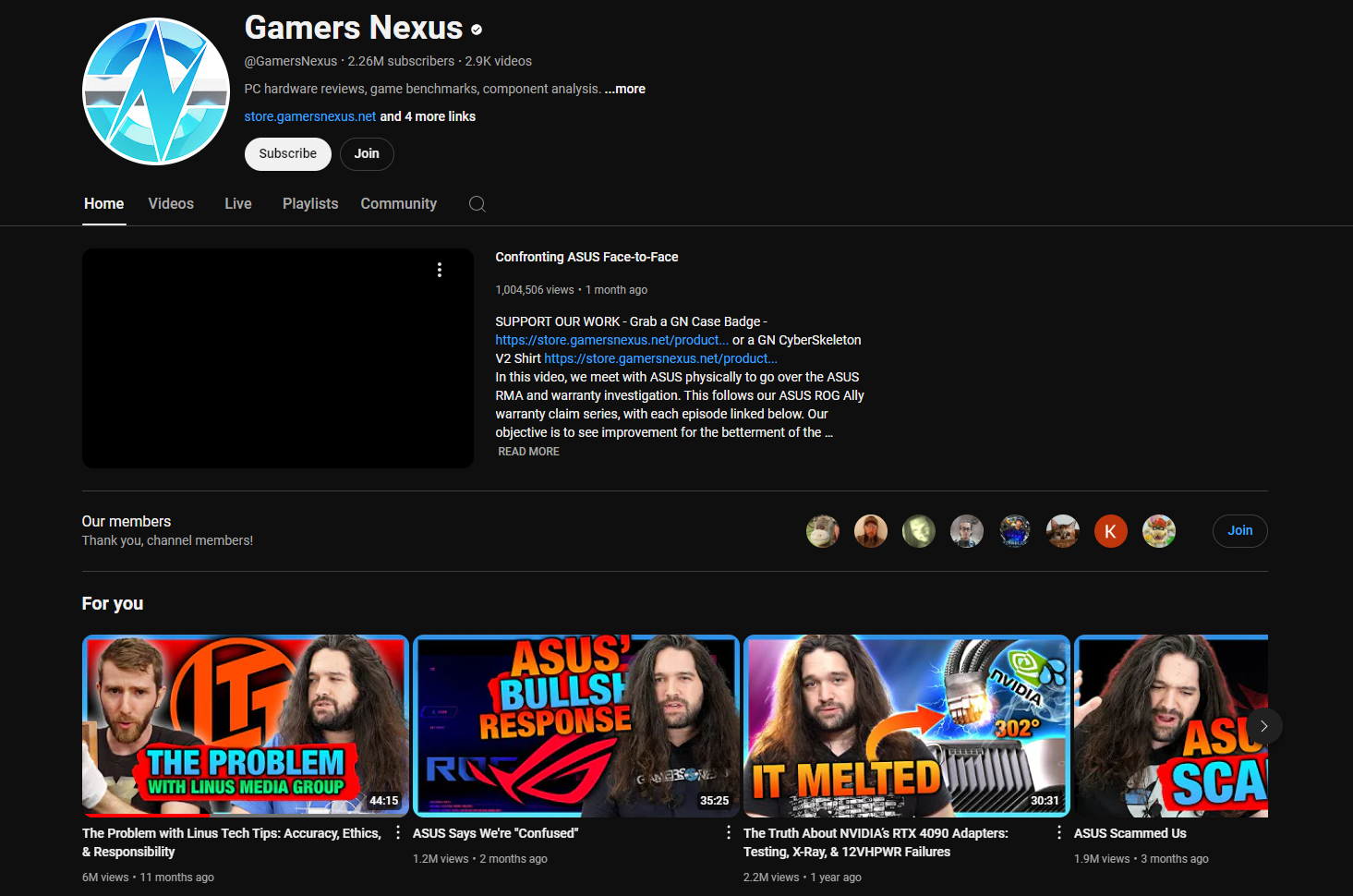
And as you can see from the selected video thumbnails, they’re not afraid to criticize faulty products from the world’s top brands, take on top manufacturers, or draw light to issues within their own industry.
How digital creators make money
So, we’ve looked at a few different types of digital content and even mentioned a few creators that you might have heard of if you’re familiar with their respective niches. But how do digital creators in general make money? Let’s examine some of their revenue streams.
eBooks
Digital creators dive extremely deeply into their respective niches and tend to develop serious expertise quickly. A lot of time, mastery of the subject matter comes first, and the content follows—so it’s only natural that they should write the book on it! eBooks are far easier to create than traditional books, especially given the nuances of publishing and distribution versus digital replication and delivery, so it makes absolute sense to compile all of that knowledge into a volume and sell it.
Online courses
A lot of digital content tends to be entertaining or informational, but there’s tons that’s educational or skill-based. A lot of people look to digital creators to learn how to do something, so many digital creators simply join the dots and offer online courses that specifically help people skill up and accomplish their goals. It’s a natural adjacency if you’re an expert and there’s a demand to get good–or just better–at whatever it is you’re doing.
Blog posts
We’ve mentioned that blogs are one of the primary forms of written content, but they’re also a brilliant vehicle toward monetizing digital content. A blog can draw web traffic, which a digital creator can then funnel through to their landing page or build their email lists. It can also establish authority in a niche, call attention to their other endeavors, or simply be paid-for posts. Doing guest posts for blogs is also a great way to draw more eyes to an upcoming product or piece of content.
Podcasts
Like blogs, podcasts are excellent ways of increasing a digital creator’s reach and reputation, and it can help to both build an audience and let said audience gain a deeper understanding of the creator’s personality and motivations. Podcasts are also easy to monetize once they start gaining an audience, with platform-based compensation on offer as well as partner payments and brand deals.
PLR digital products
Private Label Rights digital products are digital products that give the buyer (in this case, the digital creator who’s looking to build a revenue stream, not the original creator of the product) the right to edit the content or modify the product to suit their needs and then resell the product as their own without attribution to the original creator. This can open up revenue streams since they’re selling products under their own label without having to go through the time and trouble of developing the products from scratch.
Workshops
Workshops are an extension of online courses in that they serve the same purpose, but they’re definitely a more intensive, less scalable option. Running workshops is a lot of work, but many creators find that they’re a really effective way of educating participants, which results in plenty of customer satisfaction and word of mouth. Workshops can also be a high-ticket option for learners who want a more hands-on experience and attention than a course can provide.
Sponsorships
Sponsorships are a huge part of just about any digital creator’s income, and it’s possible to make sponsors work even if you’re trying to do an unbiased knowledge base or review content. A couple of sponsors can make the difference between being able to create digital content full-time or having to treat it like a side gig—and it doesn’t have to hurt your content at all. Some creators are careful to sign content that only enhances their content, and others work in sponsored content or segments creatively enough that it adds value.
Affiliate marketing
Affiliate marketing is another great option for monetization and it doesn’t intrude into content at all. It also makes a lot of sense, since if your digital content features products of some sort, you can provide your audience with an easy link to view and purchase the product in a manner that’ll also benefit you. Supporters are happy to use affiliate links for the same reason, of course, and don’t think that digital creators are stuck to only using links for products they feature. Many will have affiliate links to things like their recording hardware, different software they use, and so on.
Paid communities
Paid communities are one of the most effective ways for digital creators to earn, since many audience members are appreciative enough to consider how much a small contribution helps them. Creating a paid community rather than just relying on things like donations is also a good idea because the community can foster further expertise in the niche, springboard new ideas and content, and be a launchpad, a ready consumer group, and even offer crucial early feedback on any new forms of content that the digital creator wants to put out.
The top 5 digital creators
Let’s take a look at five outstanding creators, ordered in no particular manner but remarkable for their consistency in creation and contributions to their respective niches.
1. Beeple
Mike Winklemann, or Beeple, is a digital creator who is considered one of the most successful modern artists in the world thanks to the groundbreaking nature and commercial performance of several of his digital artworks. He first sold the NFT, Crossroad, for $66,666.66 but hit headlines when the token was resold in early 2021 for $6.7 million. Then, his Everydays: the First 5000 Days collage of images, from a project doing an artwork a day since 2007, was put up for sale at Christie’s.
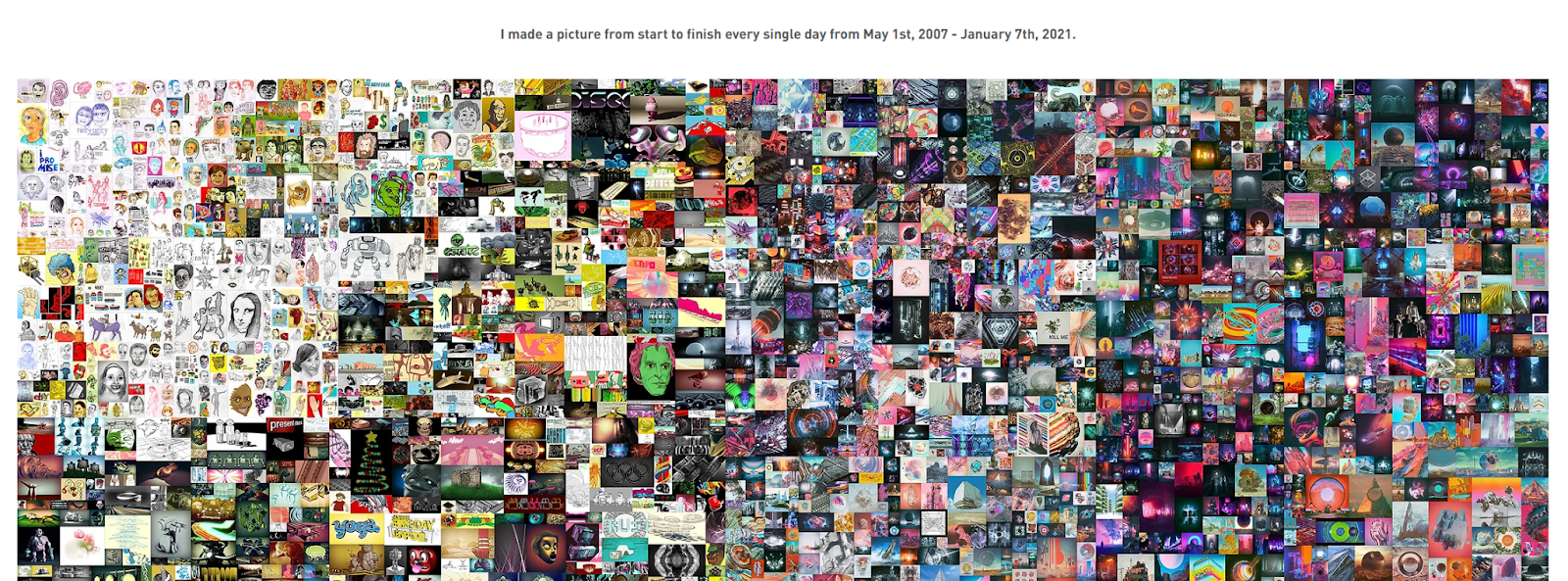
The sale of this piece for a staggering $69.4 million not only broke boundaries for its value, but it was also the first NFT sold by a legacy auction house and the first sale at Christie’s paid in digital currency Ethereum. Later in the same year, he also sold Human One at Christie’s for around $30 million, netting him earnings of close to nine figures for the two digital artworks.
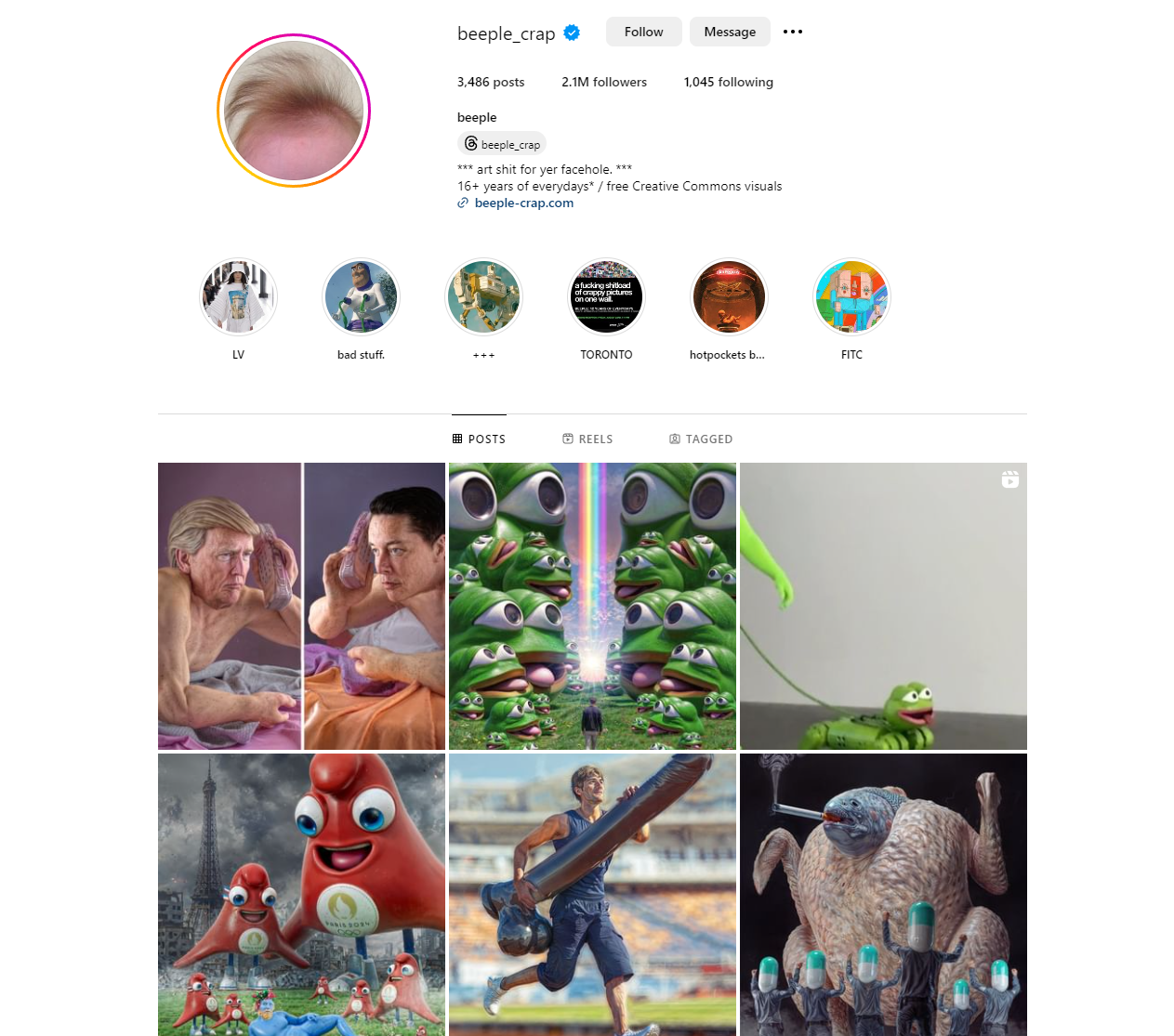
Beeple continues to create, using multiple media for works that make political and social commentaries, and has a finger still very much on the pulse of the global conversation.
2. Dude Perfect
Dude Perfect are YouTube legends, and they’ve been at it for a while—their first video was filmed all the way back in 2009. Naturally, it went viral, got hundreds of thousands of views, and garnered a mention on Good Morning America too. Their second video added a couple of zeros, hitting some 18 million views, and catapulted the group of Texas A&M roomies to superstardom.

The group are famous for their “battle” videos, where they compete with each other in games and contests featuring different sports and rules—in the above example featuring pro golfer Bryson DeChambeau and taking a variety of sporting implements onto the hallowed turf (to golfers, at least) of Augusta National in Georgia, perhaps the most exclusive club in the world, to play golf using everything but golfing gear.
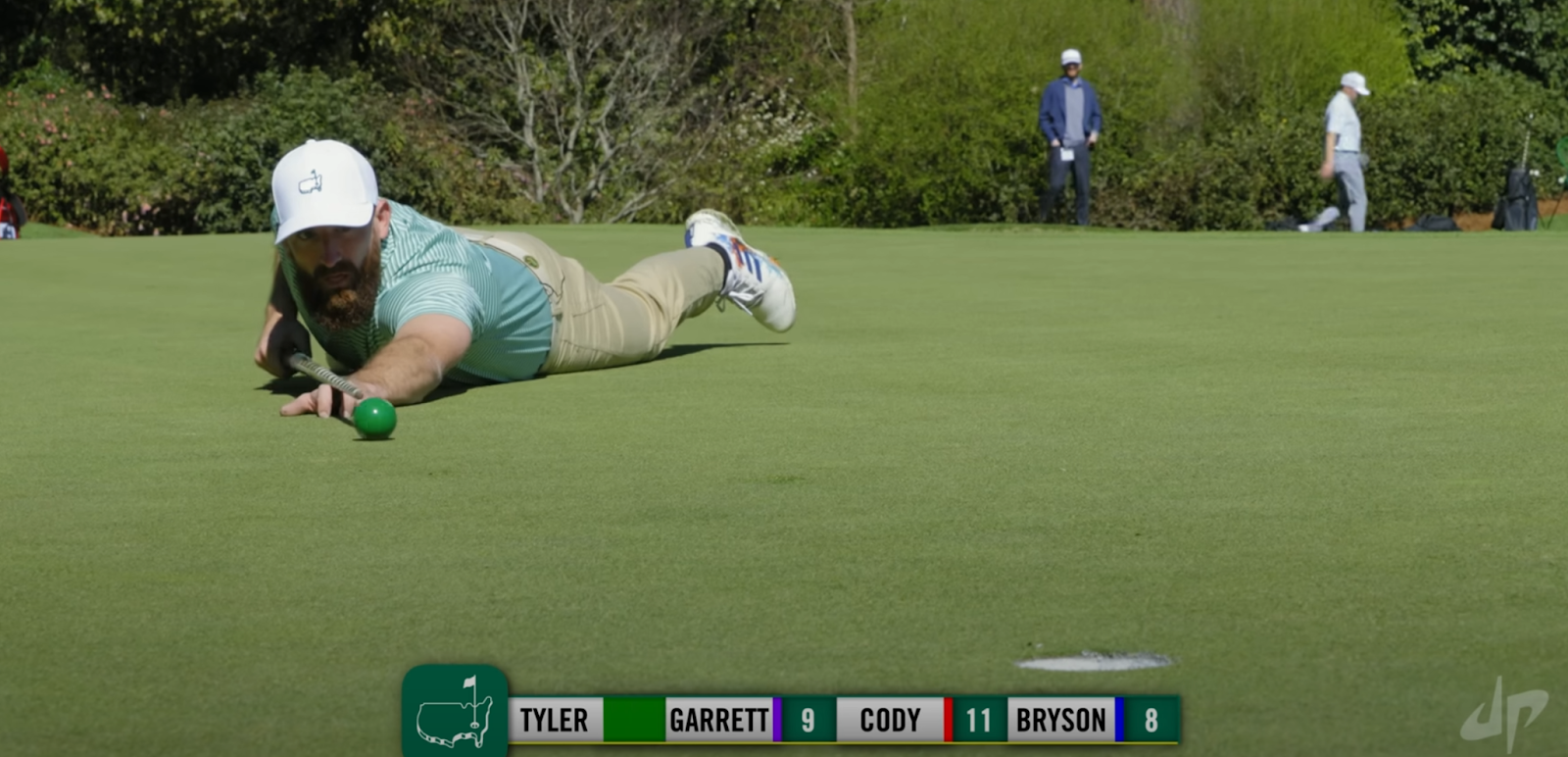
Dude Perfect are best known for their stunts and trick shots, but they’ve filmed in all sorts of locations (including on a US Navy aircraft carrier, the USS Nimitz) and with a who’s who of sportspeople including NBA megastar Luka Doncic.

The Dudes also are the current holders of a slew of Guinness World Records, including the longest basketball shot which they first made from the 3rd deck of Kyle Field then subsequently broke several times, culminating in a shot from the 561-foot Reunion Tower.
They’ve also got records for the longest barefoot Lego walk (ouch!), longest pea blow, and most Ping Pong balls stuck on a person’s head using shaving cream.
3. Cocomelon
If you’ve got kids in your life you’re probably familiar with this one! Cocomelon is a YouTube channel currently owned by a British company called Moonbug Entertainment, and they’re world-famous for creating 3D animation videos of traditional nursery rhymes as well as their own children’s songs.
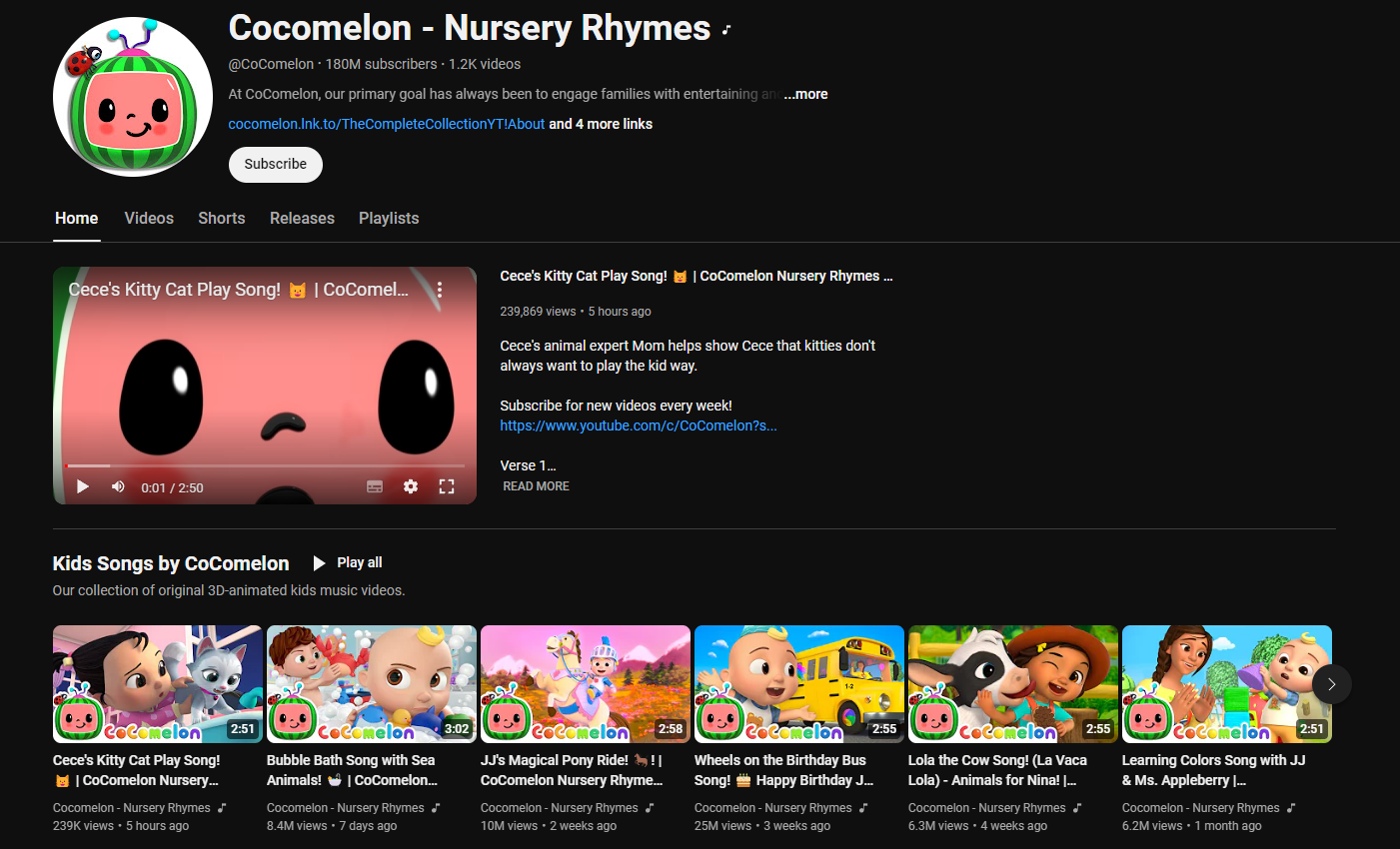
The second most-viewed and third most-subscribed channel on the entire platform, the channel was created all the way back in 2006 under the name “checkgate”. The brand started to expand in 2013 as ABC Kid TV after focusing almost solely on alphabet videos, and was soon doing animation.
The channel was rebranded to Cocomelon in 2018, two full years after hitting a million YouTube subscribers and a billion views. That might sound pretty good, but it was their famous “Yes Yes Bedtime Song” that really took them to the mainstream. It was followed up by the equally popular “Yes Yes Vegetables Song”, and between these tracks and other content, Cocomelon was soon overhauling the viewership figures of major TV broadcast networks.
Today, Cocomelon is more phenomenon than mere digital creator or music/video channel, and they’ve got an offshoot series on Netflix as well as a film adaptation in development with DreamWorks.
4. Mark Rober
Mark Rober is an alumnus of none other than NASA, having worked on the Curiosity Rover at NASA’s jet propulsion lab, and he’s also got multiple patents to his name in the area of virtual reality in self-driving cars. These are some serious engineering chops, and Rober turned them towards entertainment and education all the way back in 2011.
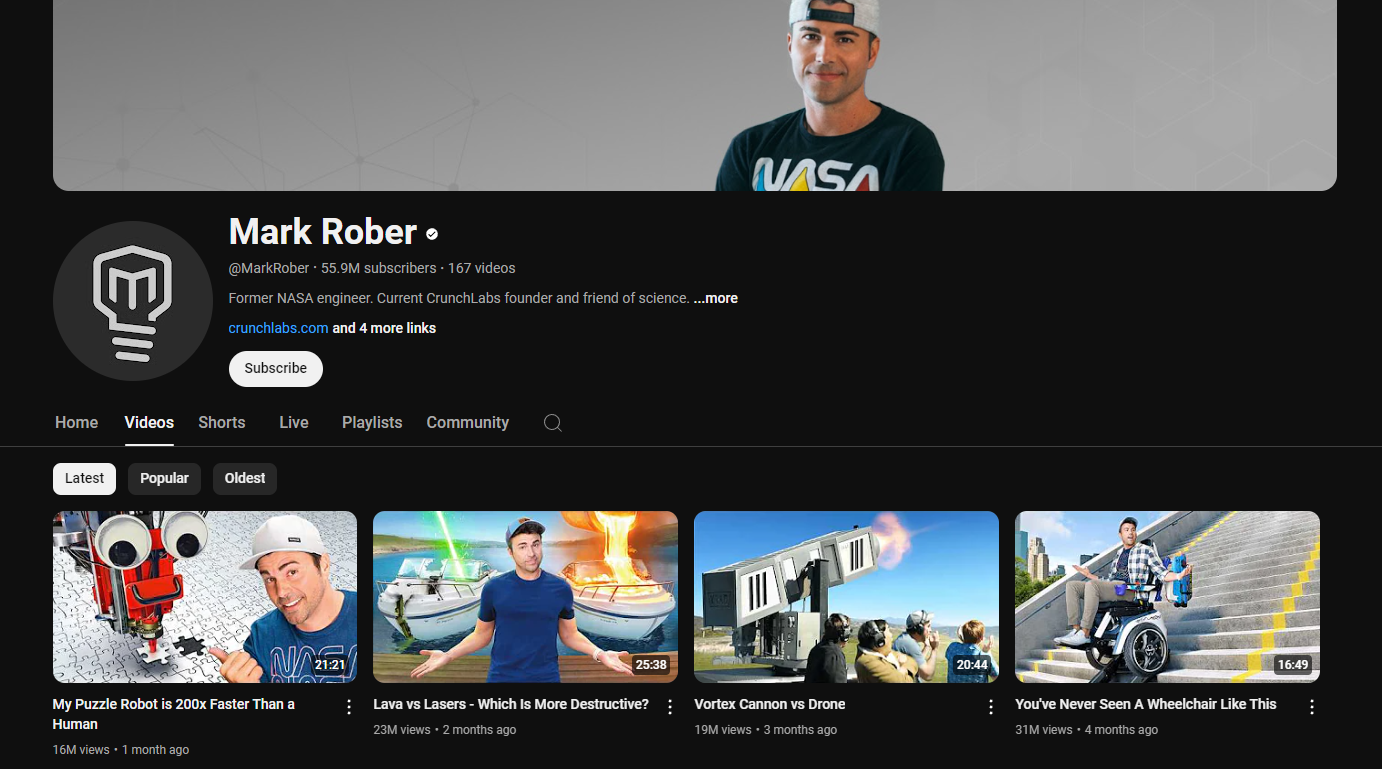
In his first video, he rigged up a Halloween costume that used two iPads to create the illusion of seeing through his body. This video rocketed him straight to fame with over a million and a half views in a single day, and Rober followed up on it by patenting the concept and launching an online Halloween costume company specializing in similar getups.
In 2018, Rober was headline news again for his “glitter bomb” which sprayed glitter and emitted a foul odor on parcel thieves, all of it naturally caught on camera. This one hit 25 million views in a day, and he’s done follow-ups on the concept, even teaming up with Macaulay Culkin (yes, that’s Kevin from Home Alone if you were wondering).
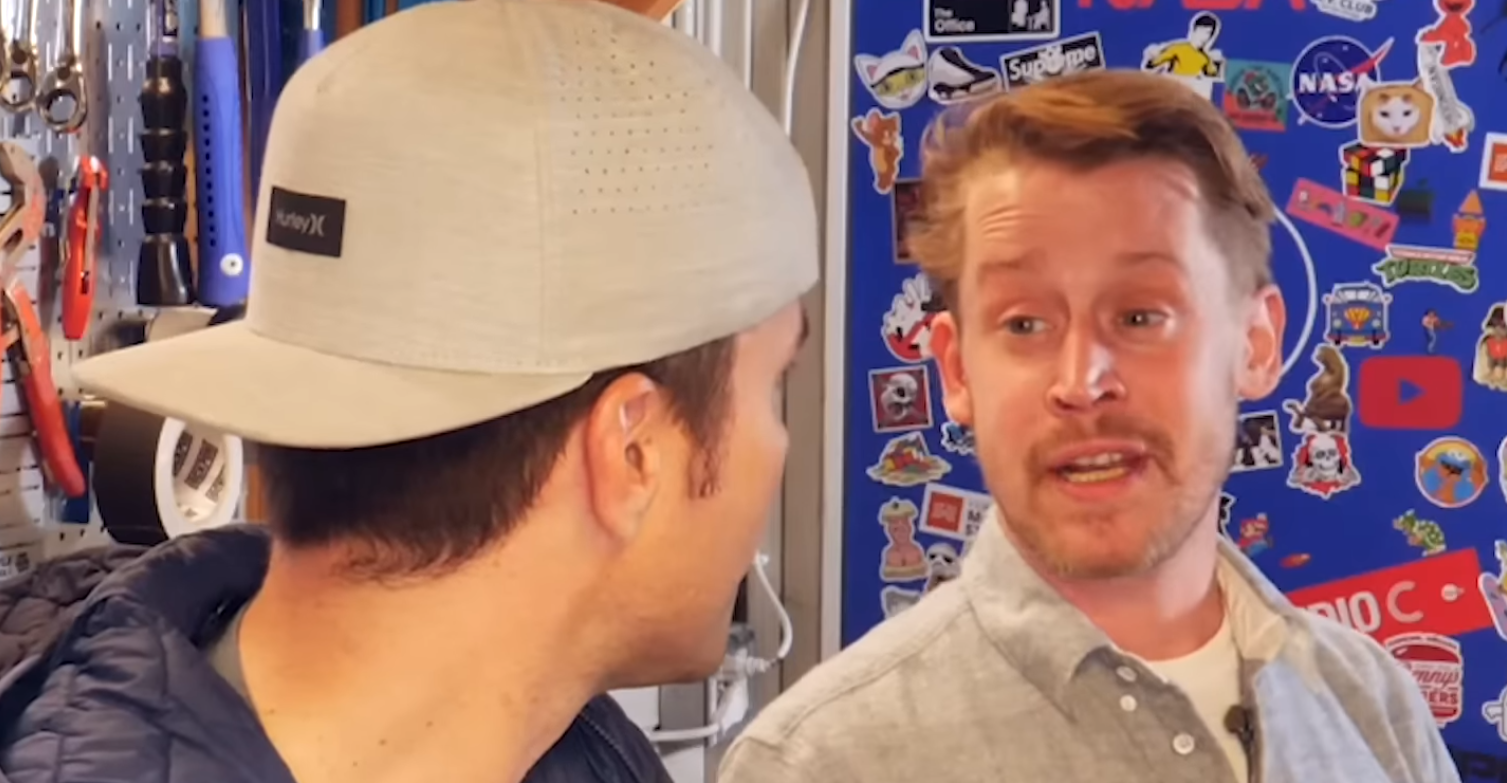
During the iterations of his glitter bomb project, he also worked with other YouTubers as well as local and federal authorities to use his glitter bomb to track and arrest money mules and scam callers. He’s also worked on several television projects, and has partnered up with number one YouTuber MrBeast on tree-planting and ocean cleaning projects.
5. Adam Buxton
Adam Buxton is a podcaster, writer, comedian and actor best known for his podcast, The Adam Buxton Podcast, on which he displays his mastery of the interviewing art alongside a variety of cultural icons. He’s interviewed celebs like Michael Palin, Billy Connolly, Paul McCartney, Charlie Brooker, and many, many more.
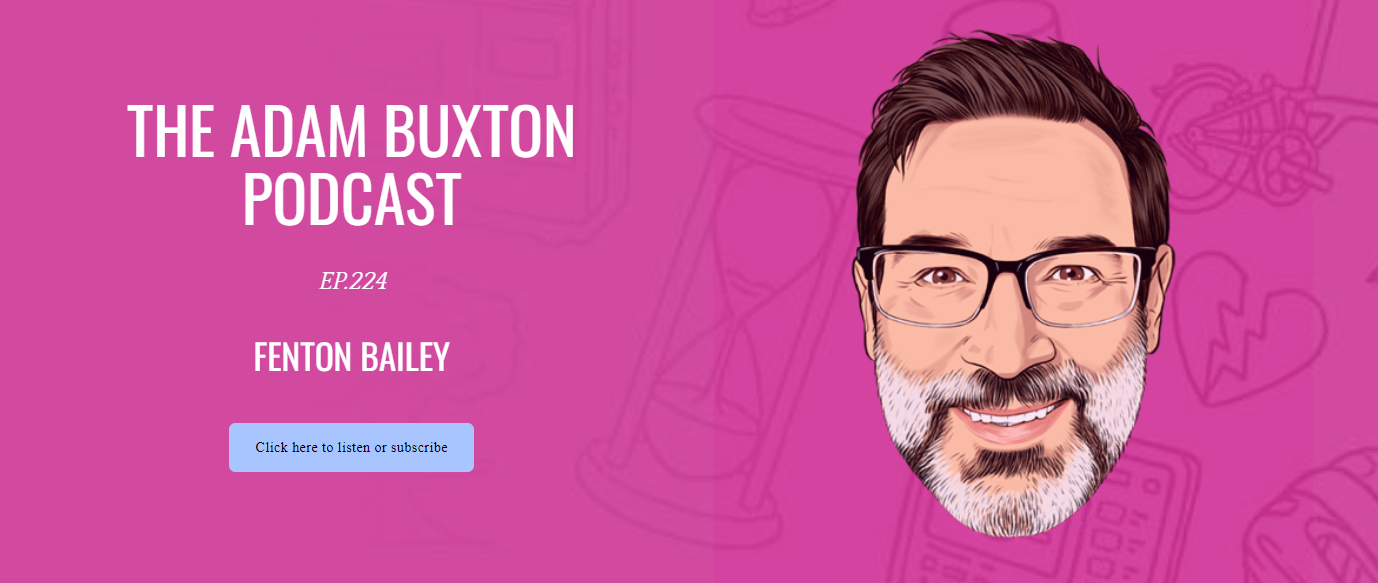
Buxton is known as one of the world’s foremost digital creators because of his ability to adapt to just about any form of creative medium. His podcast rates as one of the best listens you could ever find (and has taken home multiple gongs), but he’s also released a number of videos on YouTube and written several television projects.
He has also collaborated on multiple occasions with Radiohead, assisting a webcast for them in 2007 and directing their videos for several 2008 singles. He also created a video vignette for the band’s album A Moon Shaped Pool eight years later.
How you can become a digital creator
Most of the advice out there on becoming a digital creator will tell you that you need to be a creative type and have a wide skill set, and that you should invest in this and that to get started. We’re not buying it. If you ask the most successful digital creators how to get started, what they’ll tell you is that you should just bite the bullet and do it as soon as possible.
It’s very rare to find stories of creators going viral with their first piece of content out in the wild. Yes, we’ve noted that it happened with both Dude Perfect and Mark Rober, but they’re the exceptions rather than the rule—and they’re two of the most exceptional digital creators ever.
Most creators start by putting themselves out there, building an audience slowly, and improving their craft day by day. Sure, the internet can be a hostile place, but as a new creator, you’ll get plenty of constructive feedback from the people who do find and consume your content. You can use this to iterate and make your content better one step at a time, and as you start making money from your content you can reinvest it into better tools, more resources, and even a team to help you create.
Considering becoming a digital creator? Join Whop
If you want to try your hand at becoming a digital creator, you can’t go wrong by joining Whop. It’s free to sign up and use, and gives you lots of resources that’ll put you one step ahead. Whop’s core offering is its whop hub, where you can configure your whop with the apps you want—including the Courses app which is a full-featured course builder that you can create educational content with quickly and easily.
Whop can help you monetize in various ways, starting with your own landing page and digital store from which you can sell digital products like eBooks or gate membership to your premium community. You can manage your community using whop, run workshops, host one-on-one sessions with people, and so much more.
So, if you want to start creating, check out Whop and see how it can help you make that dream of becoming a full-time digital creator that much closer to reality.


